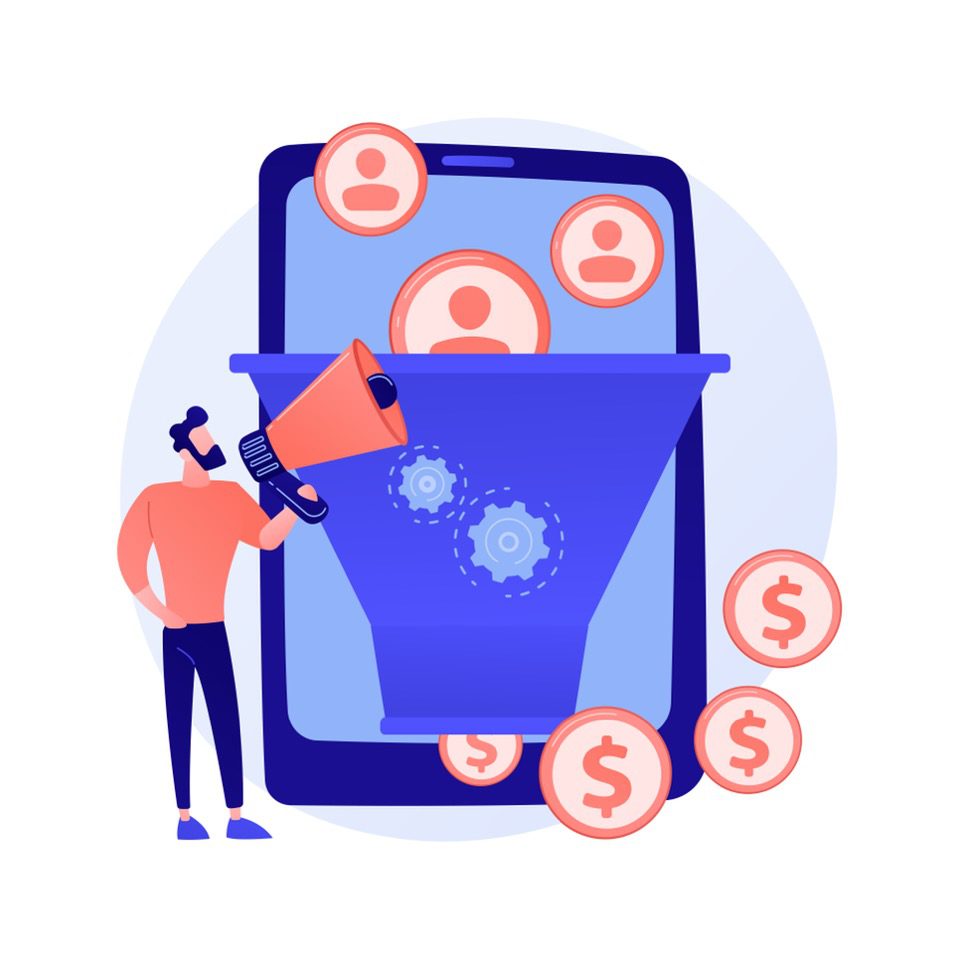Website leads provide you with valuable contact information while browsing your site. PPC ads often bring traffic to the website with the intent of acquiring new leads. However, there are a handful of effective marketing tactics beyond ads.
Below are ten tips that will help your business collect more website leads and grow loyal customers.
Collecting More Website Leads
1. Optimizing Landing Pages
Look for pages on your website that get the most visits, and attempt to optimize those over less popular pages. The idea here is that since they’re already being viewed by relatively more people, you’ll have a higher chance of generating leads from them.
To find these pages you’re going to need the help of web analytics. This information is usually displayed upfront by any major analytics platform, so you’ll be able to access it quite easily. Google Analytics users just have to go to the Behavior tab to sort all their pages by views. To better optimize for website leads, you can also sort your pages in terms of the time visitors spend on them. This gives you a more well-rounded idea of user behavior and engagement.
2. Better Web Design
94% of first website impressions are design-related. Having a poorly designed website can be a make-or-break factor for generating website leads. Better web design is a necessity when it comes to improving leads and even sales. Here are some things to keep in mind.
- Intuitive: Does the layout of the website make sense? The menus, buttons, and navigation panels should all be laid out in a logically cohesive way. Thoughtful design instills trust in users and lets them know the business knows what it is doing.
- Navigation: Navigating your website should be a fluid and easy experience even for new visitors. One aspect of this is having pages that load quickly no matter what device your visitors are using. Collecting website leads becomes much easier once users have a clear idea of what you’re offering them and how they can contact you.
Clever web design reduces bounce rates – the number of people clicking away from your website – while also increasing leads collected. The core idea behind your design philosophy should be to solve your visitor’s problems with a welcoming attitude.
3. Improving Content
Content is, and always will be, king. Underlying all of your flashy menus and drop-down navigation bars should be a base of content that aims to inform, entertain, and/or connect with the visitor.
To figure out how to improve your content you’ll have to ask yourself about what attracted users to your website in the first place. Look to create focused content that answers important questions visitors might have. You can do this through hard-hitting and concise landing pages, appealing calls to action, and even blogs.
Since many businesses take this approach for generating website leads, you can always try diversifying your content. Short-form videos, for example, are increasingly becoming a go-to medium for communication with visitors. Landing pages and leveraging social media platforms are great places to host these videos for maximum reach.
Lastly, high-quality content only goes so far as to incentivize your users to actually sign up or make a purchase. A powerful call to action is what ties the whole thing together. Make sure you’re using persuasive language combined with eye-catching design to remind your users to sign up for more once they’re done viewing your content.

4. Gaining Trust
With the growing awareness of phishing scams and easily accessible malware, even the most casual users are well aware of the risks involved with visiting new websites. No new visitor will willingly give you their contact information if they have a shred of doubt that it might be used maliciously. If you want your website to generate leads effectively, you’ll need to gain your visitor’s trust completely, here’s how.
- Keep your content updated with regular revisions at set intervals. Depending on your industry, trending topics and points of interest can become irrelevant almost overnight. The sight of outdated references can turn interested visitors away and cost you a potential sale.
- Certify your website with security standards that will reassure your visitors. The bare minimum here is an SSL certificate, easily spotted by the ‘https’ in a URL. If your website is how you conduct business online, you’ll need a PCI DSS certification so customers know their personal data will be safe with you. These are simple ways of incorporating privacy into web design that can help you generate website leads.
5. Incentivizing Leads
The central idea of marketing is to provide answers and solutions to people’s problems, and that’s the principle you should apply to website leads as well. Instead of a sidebar opt-in form as soon as a visitor clicks onto your website, try offering them a sample of your product for free in exchange for their email. Once visitors see they have something to gain from giving you their contact information, they’ll be much more likely to hand it over.
A common example of this in practice is the way companies like Microsoft offer potential customers free quotes if they contact sales.
6. Kickback Emails
Despite the popularity of new-age platforms like TikTok for marketing and lead nurturing, email marketing remains a popular lead generation trend with email volumes being up 32% since 2020.
Chances are, you’re already familiar with the email marketing funnel and the way it helps websites generate leads. You get a user’s information and nurture your lead with informative emails to eventually increase your conversion rates and boost sales. Kickback emails are a part of this funnel. These emails are what you send a user to thank them for signing up for your service.
Kickback emails have two core benefits:
- Builds legitimacy: An immediate kickback email indicates that a business is responsive to the user and builds trust with them. They can also be used as mediums to insert a call to action inviting the reader to reach out and contact you if they have any further questions.
- Reduces bounce rates: Email bounce rates are the number of emails returned to the sender over your total subscriber list. Reducing this metric is important for businesses that want to generate higher-quality website leads. Kickback emails help you identify which email subscribers are active and which are not, which is useful for pruning email lists.
7. Live Chat
New page visitors are inquisitive creatures, and even the most detailed page might not have all the answers for every new visitor. A live chat service powered by AI or a customer service representative helps increase the number of time users spend on your landing pages. Live chat promotes more responsive web design, creating a fulfilling user experience that encourages them to become website leads by signing up for email and other communication services.
If time zone constraints and resource crunch prevent you from keeping a customer service representative working the live chat around the clock, you can always supplement your service with a chatbot. Chatbots are popularly used in business off-hours to answer rudimentary queries that new users might have. This gives businesses a chance to generate website leads passively, which can be incredibly useful for companies that target international customers.
8. Content Gating
Content gating is a common way of getting visitors to sign up when they visit a page on your website. The most popular examples of this are news articles posted by journalism outlets like New York Times or HuffPost. In these cases, visitors are given a limit on the number of articles they can read before they have to subscribe, however, for the purposes of website lead generation asking for a visitor’s email should suffice.
If done well, content gating can be an incredibly effective tool for gaining access to contact information. The caveat here is that content gating is only effective if your content is consistently good enough for a visitor to want to sign up for it. This involves creating focused content that’s SEO optimized to ensure it reaches the right audience.

9. Well-Timed Offers
Your landing pages don’t have to be static. Involving dynamic elements that get triggered as the visitor performs certain actions can be an effective way of generating website leads. For example, there are certain marketing solutions that can estimate when a visitor is about to click off your page. Timing an offer to pop up right before they leave the website can re-engage the visitor and even net you a lead.
This is no different than how businesses optimize their checkout process by offering discounts if a potential shopper keeps items in their cart for too long. The trick here is to be precise and non-intrusive in the way you present your offers to website visitors. Large, loud ads that pop up too soon and impede website usability will only end up annoying your users.
10. Reviews and Testimonials
Gaining a visitor’s trust to turn them into a website lead is already tough, and it can be even harder for newer businesses that are trying to break into an established market. Having a dedicated page for customer reviews, as well as integrating them in bite-sized pieces on your product pages can help mitigate this problem.
Encouraging customers to leave reviews has two main benefits:
- It assures people new to your brand and business that your service can be trusted to deliver on the promises you’re making.
- It encourages leads to turn into customers by showing your products in action. Not only will visitors be encouraged to sign up, but they’ll also want to participate in the mini-community that review sections can create.
Leading The Way To Success
Website leads form the foundation on which your marketing strategies will funnel users towards completing a purchase. Using basic concepts like kickback emails and more advanced techniques like content gating can net you an increase in leads in exchange for a relatively small amount of investment. Follow the BESTWEB blog to learn more about converting leads to customers.

